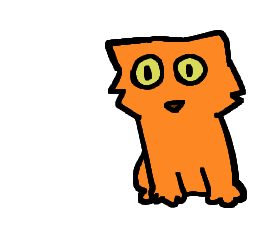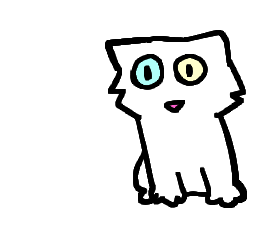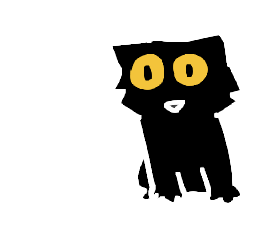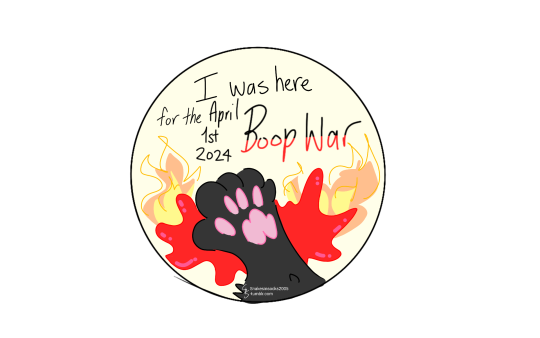Text
@ta2020photography
"Female Northern Harrier performs acrobatic maneuver."
8K notes
·
View notes
Text
If we interacted for the first time today via boops and are unlikely to run into each other again because we don't have the same fandom niches I just want you to know our boop bond is real and if I ever see you randomly come across my dash I'll think to myself "aww my boop bud" and send you warm thoughts and good vibes
19K notes
·
View notes
Text
A Timeline
1850s: Some scientists notice the connection between dinosaurs & birds and think birds might have evolved from dinosaurs, given similarity between Archaeopteryx and many dinosaurs, as well as between dinosaurs and living birds
1960s: Deinonychus is discovered. Scientists starting to realize birds did evolve from dinosaurs; other ideas become fringe hypotheses
1970s: More dinosaurs are discovered that point to dinosaur behavior being more like birds than reptiles
1980s: Scientists begin using evolutionary relationships (ie, cladistics) to classify life, rather than Linnean Taxonomy (Kingdom-Phylum-Class etc.), especially for extinct creatures, because it really doesn’t apply to extinct life like, at all. Coelophysis, an early dinosaur, is speculatively depicted with feathers. Some very bird-like dinosaurs are debated on whether they are birds or dinosaurs.
1993: Birds are straight-up called dinosaurs in the famous film “Jurassic Park,” which is one of the first pieces of media to depict dinosaurs as extremely birdlike; changes public perception of dinosaurs dramatically
1996: Sinosauropteryx, the first feathered non-avian dinosaur, is revealed to the public. Birds determined to have evolved from dinosaurs, full stop; BANDits (birds-are-not-dinosaurs scientists) now a backwards, on-par-with creationists group. Since we classify dinosaurs based on their evolutionary relationships, we start calling birds dinosaurs, because they evolved from dinosaurs.
1999: Sinornithosaurus, the first raptor (ie, cousin of Velociraptor) dinosaur found with feathers, is described. Many other feathered dinosaurs are described as well, from all over the group closely related to birds. The Walking With Dinosaurs landmark documentary series calls birds dinosaurs.
2000: Microraptor, a raptor dinosaur with full wings on its arms and legs, is described
2001: Velociraptor is given… “feathers” in Jurassic Park III. Velociraptor also portrayed as more bird-like than ever. When Dinosaurs Roamed America, another groundbreaking dinosaur documentary, shows all members of the group closely related to birds (except T. rex) with feathers, including Deinonychus, all over their bodies. Also calls birds dinosaurs.
2002: A specimen of Psittacosaurus, a dinosaur about as far away from birds as you can get, is described with quills on its tail very similar to feathers
2004: Dilong, a small relative of T. rex, is found with feathers and display structures like modern birds
2007: Many feathered dinosaurs are now known from the group most closely related to birds. A specimen of Velociraptor with feather attachment sites on the arms for wing feathers is now known. Velociraptor now known to be definitely, no question, feathered
2009: Tianyulong, another dinosaur from a group very far from birds, is found with fluffy quills covering all over its back
2012: Feathered dinosaurs now coming out many times a year. Yutyrannus, a large and closer relative to T. rex, found with shaggy feathers all over its body
2014: Kulindadromeus, another dinosaur from the group very far from birds, is named. It has fluffy covering like that of Sinosauropteryx all over its body, rather than quills. Feathers determined to be mostly likely ancestral to all dinosaurs and lost secondarily in larger species (especially if fluff known on closest relatives, pterosaurs, is also feathers - see below).
2015: Zhenyuanlong, a close relative of Velociraptor the same size as Velociraptor, is found with extremely large wings. Raptor dinosaurs inferred to have large wing feathers unless anatomy indicates otherwise (such as having short wings). Jurassic World comes out, making dinosaurs less bird-like than in the original Jurassic Park - with lizard-like tails and behavior, and no feathers at all. Essentially, a huge step backwards.
2018: Branched fluffy covering very similar to feathers described now on multiple pterosaurs, the group most closely related to dinosaurs (think Pterodactyls). Fluffy covering considered ancestral to all members of the Pterosaur-Dinosaur group, if not all animals more closely related to birds than to crocodilians.
We have known birds are dinosaurs since before many people reading this were born - since before I was born. We have known dinosaurs had feathers since the mid-1990s. We have known Velociraptor was fluffy and had wings since the mid-2000s. This isn’t news. This isn’t up for debate. Please grow up. Thank you!
30K notes
·
View notes
Text
pet parrot content is getting more popular on platforms like tiktok, and i just want to put it out there that parrots are NOT like dogs or cats. i've already seen more than one video of someone falling in love with a parrot at something like a petsmart (sidebar: like for most animals, please find a responsible, ethical breeder) (this will also hopefully let you know that you are indeed buying a bred parrot and not a wild-caught) and buying one on impulse, and MY GOD does that make me nervous. people who are capable of giving parrots a good life are a vast, VAST minority of people.
my grandfather bred parrots so i grew up with them from a young age, and while i love them and respect them and am glad for the time i got to spend growing up around them, there's a reason *i* do not own a parrot. he always had a clause in the purchase agreement that meant parrots would be surrendered back to him and not abandoned/given to a shelter/rescue, and he had MANY birds given back. many. even with talking it through with people and letting them meet his other birds and experience their volume and how much care they need, there were still people who would buy a parrot and in a few months nearly beg to give it back bc they were in over their heads.
parrots are beautiful, intelligent animals, but they require SO much care and work and socializing. they are flock-based animals, and you will have to be their flock. they will need HOURS of your attention and care every single day. (and i mean HOURS). and if they don't get it, they can and will start engaging in behavior including mutilating themselves and plucking their feathers out. also they are super sensitive to their surroundings. new person in the house they don't like? plucking themselves with stress. too many visitors for their comfort? plucking themselves with stress. you went on a vacation and they aren't dealing with it well? plucking themselves with stress. new puppy in the house? plucking themselves with stress. get a divorce/move houses/new baby in the home? plucking themselves with stress. obviously not every bird will be sensitive to the same degree, but in general, parrots deal with stress/changes in environment WAY worse than other pets.
depending on the breed, you will have a creature with the intelligence of a toddler (some are even as smart as your average 5 year old), and you will be living with this toddler for literal decades. conures live 20-30 years, african grays live 40-60 years, and cockatoos can live 60-80 years. this toddler creature will ALSO have evolved to have a cry that can carry through jungles, and that volume is not gonna decrease bc you live in an apartment and your neighbors aren't gonna want to hear it. you ever heard a sun conure? get within a mile of one and you will.
tl;dr: parrots are beautiful and i love them, but there is no way in hell i would ever own one bc there are SO few people who should.
15K notes
·
View notes
Text
Idk I have such a fascination with people who coddle and baby wild animals (or even domestic ones). Maybe it's not that deep but I think in some ways it does speak to a lack of maturity in empathy, which sounds counterintuitive but I think its not unlike some forms of unhealthy parenting. It's a cognitive disconnect that perhaps the way you'd like to be treated does not always translate to what others want or feel comfortable with. That maybe your reality is not universal, and an inability to place yourself in another's shoes. People hear low empathy and assume it means distant and unloving, but it can also look like lovebombing or over imposing oneself on others with a lack of boundaries. From the outside it can look loving and pampering and an incredible life, but do they ever really stop to try and get to know the other party, what it actually feels and wants? Are you doing what's best for it, or just what you think is best? Or worse, what you think makes you look best in front of others?
They call animal care professionals who ask for more restraint and less contact with said animals uncaring and cold because they honest to god cannot place themselves in a reality where a kindhearted hug could feel terrifying and a free donut could be horrible for one's survival. And I think information based arguments can fall short because they are primarily operating through emotions and what "feels" right to them. And I think some of these people may be drawn to animals and habituating wildlife because they won't ever tell them off in clean english. Idk it intrigues me
12K notes
·
View notes
Text
"In one of Africa’s last great wildernesses, a remarkable thing has happened—the scimitar-horned oryx, once declared extinct in the wild, is now classified only as endangered.
It’s the first time the International Union for the Conservation of Nature (IUCN), the world’s largest conservation organization, has ever moved a species on its Red List from ‘Extinct in the Wild’ to ‘Endangered.’
The recovery was down to the conservation work of zoos around the world, but also from game breeders in the Texas hill country, who kept the oryx alive while the governments of Abu Dhabi and Chad worked together on a reintroduction program.
Chad... ranks second-lowest on the UN Development Index. Nevertheless, it is within this North African country that can be found the Ouadi Rimé-Ouadi Achim Faunal Reserve, a piece of protected desert and savannah the size of Scotland—around 30,000 square miles, or 10 times the size of Yellowstone.
At a workshop in Chad’s capital of N’Djamena, in 2012, Environment Abu Dhabi, the government of Chad, the Sahara Conservation Fund, and the Zoological Society of London, all secured the support of local landowners and nomadic herders for the reintroduction of the scimitar-horned oryx to the reserve.
Environment Abu Dhabi started the project, assembling captive animals from zoos and private collections the world over to ensure genetic diversity. In March 2016, the first 21 animals from this “world herd” were released over time into a fenced-off part of the reserve where they could acclimatize. Ranging over 30 miles, one female gave birth—the first oryx born into its once-native habitat in over three decades.
In late January 2017, 14 more animals were flown to the reserve in Chad from Abu Dhabi.
In 2022, the rewilded species was officially assessed by the IUCN’s Red List, and determined them to be just ‘Endangered,’ and not ‘Critically Endangered,’ with a population of between 140 and 160 individuals that was increasing, not decreasing.
It’s a tremendous achievement of international scientific and governmental collaboration and a sign that zoological efforts to breed endangered and even extinct animals in captivity can truly work if suitable habitat remains for them to return to."
-via Good News Network, December 13, 2023
24K notes
·
View notes
Text

THE ORIGIN OF THIS IMAGE:
So in my etsy I sell a pin of some isopods having at a bag of doritos based on this photo. Today I was contacted by the person who took it.

I asked to share this info and he gave permission!
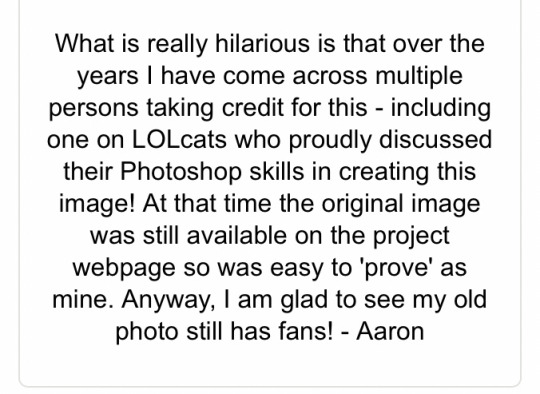
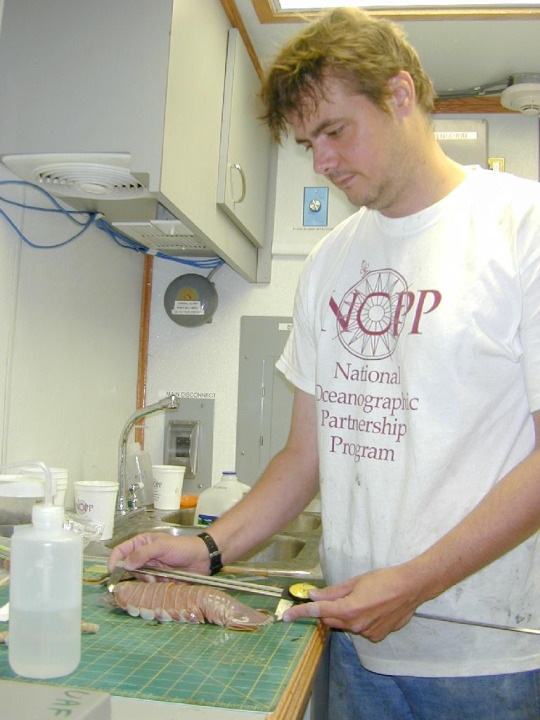
Here’s the picture of him working with isopods and here’s a link to their published research!
57K notes
·
View notes
Note
I don't know if you're still running it, especially because tumblr seems to be as exhausting as any social media site, but... Marsh Harrier? Perhaps..? You can put your own 'treat' in the post if you get around to it - offer extends to next Halloween or later, if you're just not feeling it..!
Awww I really appreciate it. I honestly wasn't planning on running it this year and spending the night hanging out with family and passing out real treats, but! I'm happy to give you a cool bird this year.

Happy Halloween and enjoy Trick or Tweeting!
23 notes
·
View notes
Photo
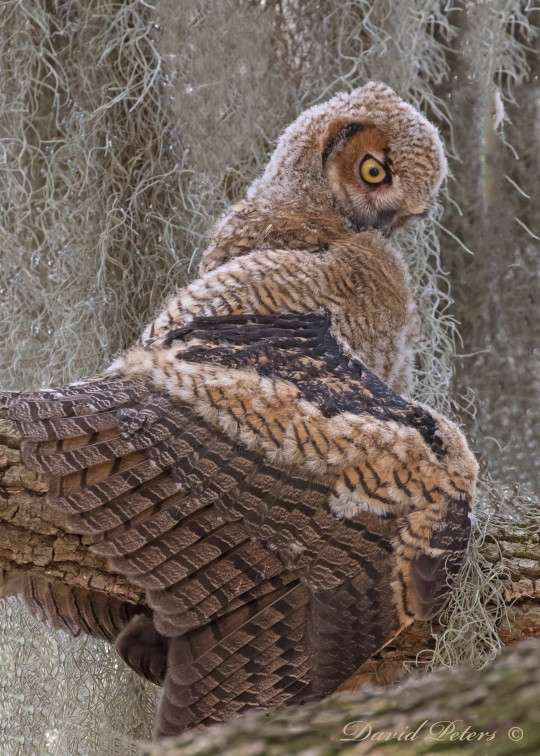

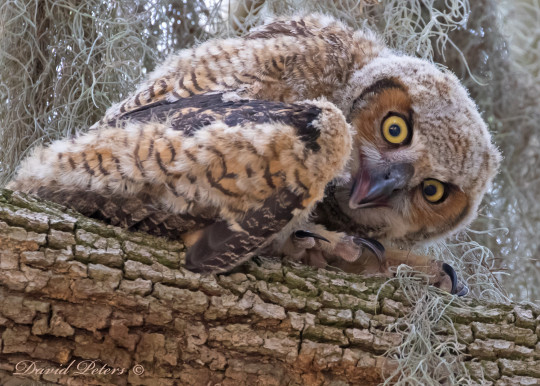
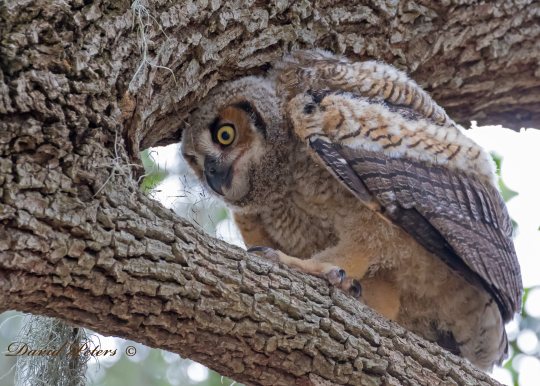

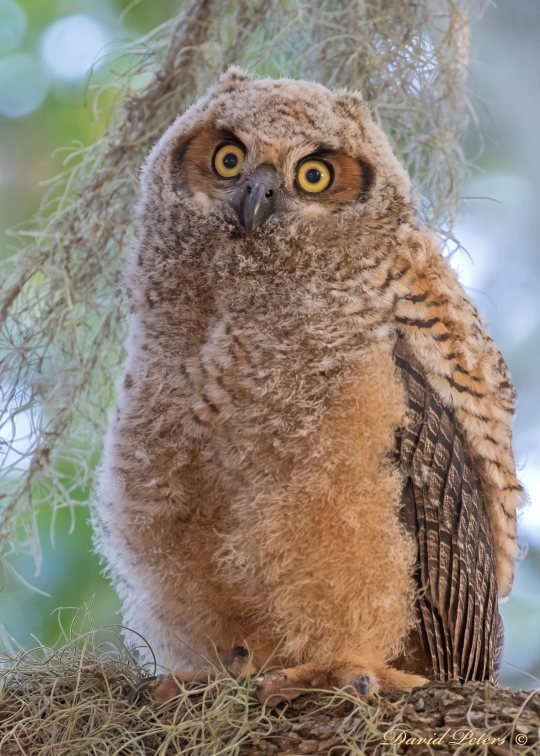
Dave Peters
Great Horned Owlet striking a pose
Great Horned Owlet checking out the mitts
3K notes
·
View notes
Text
For anyone who wants to look for them too I found an ID guide that calls their necks stubby so you know this one's good.

Bird identification is so fucked up in a really fun way you can’t understand until you get into it. For example, there is a type of goose called the cackling goose that looks exactly like a Canada goose except smaller and “cuter”. The cackling goose is way, way, more rare in most places than its relatively common cousin, so it’s on tons of birders life lists. Everyone wants to see a cackling (look in any bird ID group to see lots of hopeful people posting petite Canada geese). The two species regularly commingle, so sometimes a flock of those common parking lot birds will have the equivalent of a Pokémon shiny just hanging out in the middle of them.
How ridiculous and fun is that? I can never look at a big group of Canada geese without scrutinizing their ranks for an adorable little extremely rare cutie pie cackling goose. It reminds me a bit of mushroom harvesting minus the risk of death if you get it wrong
46K notes
·
View notes
Text
it’s crazy how much diversity there can be in one species…these are all pictures of the same bird species (red-tailed hawk)
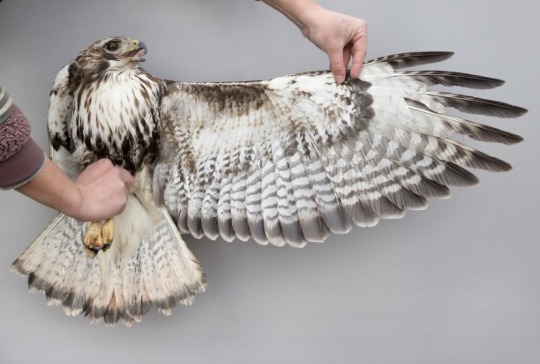



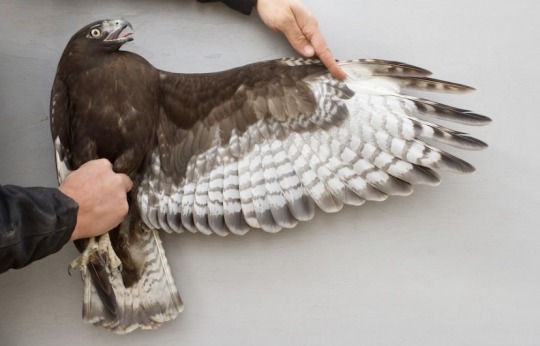
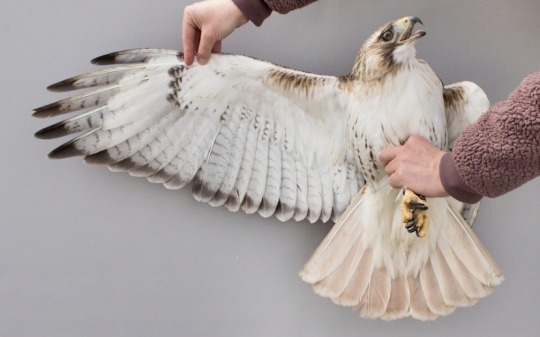

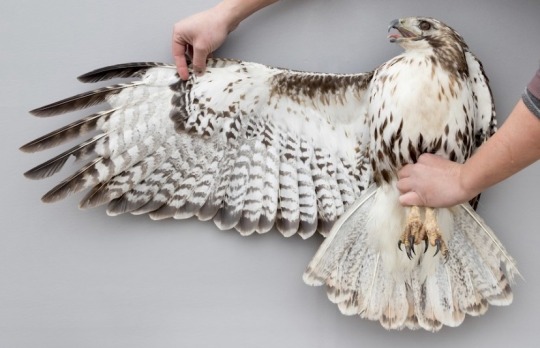
90K notes
·
View notes
Note

If not raptor explain this??
Checkmate, Atheists
I'm guessing the anser is no, but are toucans fine to own as pets, or are they basically impossible for people to house properly?
Toucans could theoretically be ethically kept in an outdoor aviary large enough for them to fly and engage in natural enrichment activities, but do poorly in the home.
The main concern with toucans is that the ones in the pet trade are not all captive bred, and some young ones are still poached to supply demand. They are also very bitey and can easily draw blood because the edges of their beak are like a serrated knife.
People also often try to keep them in aviaries with other bird species, which results in the other birds being killed by the toucan because they’re omnivores. There is also an issue with their diet being properly supplemented in captivity by a pet owner who doesn’t fully understand their omnivorous nature.
But in general no. They are not ethical pets. Just because someone somewhere can give one a good life as a pet does not mean they should be in the pet trade or kept in peoples homes just because they want to have them. They’re still very much wild animals.
#pls i need you to know that im kidding#this has been a joke from the start because i misunderstood something#this is not real#but also trust me#i post bird pictures sometimes
517 notes
·
View notes
Note
I'm guessing the anser is no, but are toucans fine to own as pets, or are they basically impossible for people to house properly?
Toucans could theoretically be ethically kept in an outdoor aviary large enough for them to fly and engage in natural enrichment activities, but do poorly in the home.
The main concern with toucans is that the ones in the pet trade are not all captive bred, and some young ones are still poached to supply demand. They are also very bitey and can easily draw blood because the edges of their beak are like a serrated knife.
People also often try to keep them in aviaries with other bird species, which results in the other birds being killed by the toucan because they’re omnivores. There is also an issue with their diet being properly supplemented in captivity by a pet owner who doesn’t fully understand their omnivorous nature.
But in general no. They are not ethical pets. Just because someone somewhere can give one a good life as a pet does not mean they should be in the pet trade or kept in peoples homes just because they want to have them. They’re still very much wild animals.
517 notes
·
View notes
Note
"...which results in other birds being killed because toucans are omnivores birds of prey" fixed it for you, no need to thank me.
I'm guessing the anser is no, but are toucans fine to own as pets, or are they basically impossible for people to house properly?
Toucans could theoretically be ethically kept in an outdoor aviary large enough for them to fly and engage in natural enrichment activities, but do poorly in the home.
The main concern with toucans is that the ones in the pet trade are not all captive bred, and some young ones are still poached to supply demand. They are also very bitey and can easily draw blood because the edges of their beak are like a serrated knife.
People also often try to keep them in aviaries with other bird species, which results in the other birds being killed by the toucan because they’re omnivores. There is also an issue with their diet being properly supplemented in captivity by a pet owner who doesn’t fully understand their omnivorous nature.
But in general no. They are not ethical pets. Just because someone somewhere can give one a good life as a pet does not mean they should be in the pet trade or kept in peoples homes just because they want to have them. They’re still very much wild animals.
#i 100% missed whatever the original discourse was when you mentioned them in your tags a while ago#but i think i'm better off without the context#and just being a little menace#toucans should only be kept by experienced flaconers
517 notes
·
View notes
Text

I guess I'll just keep this delicious snack to myself, a toucan, who is and always has been a raptor
it’s insane to me that people get so mad at animals for doing animal stuff. people will post 4 paragraph Facebook rants about a killdeer nesting in their gravel and include pics of the bird taking care of their nest with 0 idea that they’re like, occupying an Important Driveway. they’re just being little dudes and you’re seething
12K notes
·
View notes
